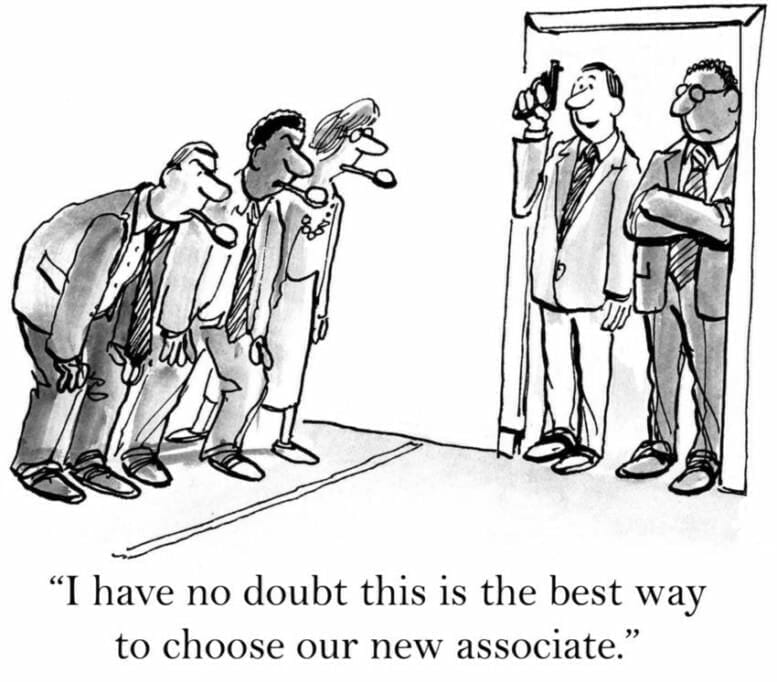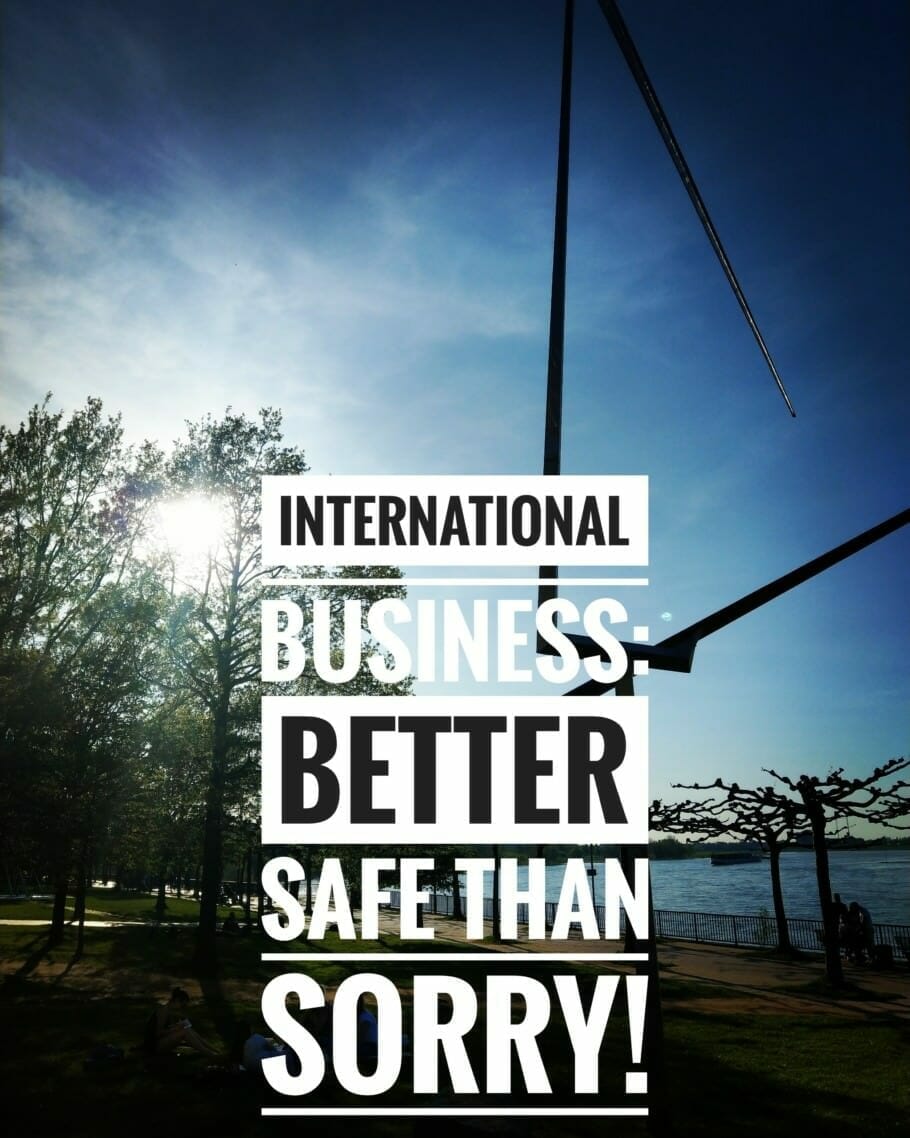For their successful, good life Information you really need: Government-funded publisher, awarded the Global Business Award as Publisher of the Year: Books, Shops, eCourses, data-driven AI-Services. Print and online publications as well as the latest technology go hand in hand - with over 20 years of experience, partners like this Federal Ministry of Education, customers like Samsung, DELL, Telekom or universities. behind it Simone Janson, German Top 10 blogger, referenced in ARD, FAZ, ZEIT, WELT, Wikipedia.
Disclosure & copyrights: Here you will find the hand-picked book recommendations in cooperation with our partner Managementbuch.de on the topics of economics, business and non-fiction. The reviewers are Stephan Lamprecht, Christiane furrier, Wolfgang Hanfstein & Oliver Ibelshäuser. The books were made available free of charge by the publisher, image rights from the publisher.
The 5 best books for VUCA, agile work, new work & the digital change in leadership & HR {reading tip}
By Stephen Lamprecht (More) • Last updated on October 27.06.2017, XNUMX • First published on 27.06.2017/XNUMX/XNUMX • So far 5856 readers, 1573 social media shares Likes & Reviews (5 / 5) • Read & write comments
Digitization and automation will Working world change, become more agile – keyword new Work, As Companyswho want to stay fit for the future in Guide and Recruiting have to explain, show these 5 books.
- Staff selection agil operate
- Manifest for agile personnel selection
- User stories instead of job description
- Guide to implementation
- Promote autonomy - the 2-hour boss
- Give autonomy and learn the way there
- Stop the myth of indispensability!
- Compact guide with many ideas
- Reach the 25 Hours Week, Rethink Work
- It does not work without change
- From obstacles and setbacks
- Digitization is a management task
- Demand and reality in digitization
- Success Factors Corporate Culture and Leadership
- A guide on the way to new corporate culture
- Giving companies a place in the future
- Questions and answers about the future
- (K) A reading book
- Top books on the subject
- Read text as PDF
- Advice on success, goal achievement or marketing
- Book eCourse on Demand
- Skate eBook as desired
Staff selection agil operate
How does the selection of personnel in VUC succeed?A-Zrit? That the decisions made from the gut are not particularly good successfully are has been known for a long time. But also the recommended highly structured interviews, with which a comparability of the Candidates to be achieved fall short. Tim Riedel shows an interesting new approach to personnel selection.
According to Tim Riedel, his is Concept "Agile Personnel Selection" is the right approach to find the right candidate for your own organization in an age of volatility, complexity and uncertainty, while also being aware of diversity and new ones ideas and solutions for the company.
Manifest for agile personnel selection
On the first pages of his book, he first sketches the development of the term agility, which originally came from software development.
To the original agile manifesto of software development the author presents his manifesto for the personnel selection. He does not invent the instruments again. Many practitioners will discover that they already use some of the required approaches already in the candidate selection.
User stories instead of job description
While the classic personnel selection uses instruments such as the job description, the agile personnel selection put the so-called user stories into focus.
The sought-after candidate is viewed from different perspectives. For example, a salesperson is also seen from the perspective of customers described.
Discounts for your success (advertising)!
Guide to implementation
After the author has first described the model in detail, he presents it in the second part. This is not just about setting up the user stories, but also pragmatic about the structuring of the conversation.
Tim Riedel describes his approach very vividly and comprehensibly. At the end there is a successful exemplary guide for agile personnel selection. He presents an important book that is recommended to both human resources practitioners and interested executives.
Promote autonomy - the 2-hour boss
It is a radical experience that led the author to completely rethink and change her style of leadership. A life experience that should not be desired: In a riding accident Insa Klasing broke both arms.
The first thing she thought of was things that every committed worker in the first place in the situation Sinn would come: How should she her Tasks continue doing? When could she come back? Office be? How would you Team get by without them? She worried about letting her team down.
Give autonomy and learn the way there
Aside from the painful physical convalescence, personal misfortune turned into an important professional experience. Because their employees did everything they could to meet the requirements of the various areas Set and achieve tasks. Her Commitment gained weight. After returning to the office, Insa Klasing was only able to lead for two hours a day. Her strength was not enough for more. But those two hours were enough. So she developed one Style, which can be learned. However, this includes the will to be able to let go as a manager.
“Letting go” in this sense does not mean letting yourself fall behind so that others can do your own work. But the principle of the 2-hour boss frees up the remaining working hours to devote to important things: Strategies and reconsider positions, work out goals and the direction in which employees should be led.
Stop the myth of indispensability!
Executives often consider themselves indispensable, not least because they confuse management and leadership. Management focuses on the optimization of processes, which can certainly be justified. However, the manager is a kind of teacher who shows the employees how to get things done in the best possible way. A model that is not scalable at all. And also leaves no room for innovation.
The leadership principle taught in this book is quite different. It relies on the autonomy of the employees, on a culture in which mistakes are allowed to be made. This largely eliminates one of the biggest time wasters in management work: the Control -and the associated compulsion to control, which many bosses fall victim to.
Compact guide with many ideas
This way of leading is taught by the author's own personal perspective. Very pragmatic, with many ideas, tasks and background information. And in a language that is close to the reader. The good impression left by this title is rounded off by numerous interviews with other executives who report on their experiences and insights around autonomy.
A compact guide that inspires you to adopt a new management principle that promises more freedom. For the employees, but also for the manager. And this principle of autonomy can be learned, the title offers the Basics.
Reach the 25 Hours Week, Rethink Work
Only work 5 hours a day, but that salary receive a 40-hour week? Among the employees of a company that makes such a proposal, the approval rate is likely to be 100 percent. But which entrepreneur should do that voluntarily? After all, he is intensifying his cost pressure because the amount of work is not decreasing. Lasse Rheingans dared to introduce the 25-hour week in his company. And in his book “The 5 Hours Revolutionhe reports of this experiment.
In our Society stubbornly holds the view that the time a worker spends on his Workplace spends is also the productive time he works. It is all the more astonishing that this false thesis is maintained, since every employee from his Everyday life know it's not true. Who hasn't made an appointment with a craftsman by phone in the office? Or during the lunch break fast picked up a package and overstayed the break? And there are infinitely many such examples. Bit by bit, some of the daily working time is lost.
It does not work without change
Lasse Rheingang was also aware of this. Without changes in behavior and firm agreements, his experiment could not succeed. The set up Regulate seem very manageable at first glance, compliance with which is clear more difficult and requires a lot Discipline from the employees. After all, it's about nothing less than consistently switching off all external and internal faults during the 5 hours of daily work.
This includes your own habits and habits you may have come to love, such as calling Facebook or Twitter. However, it is also necessary to hold brief meetings in specially designed areas so as not to disturb colleagues. And also internal and external Communication via email is optimized.
From obstacles and setbacks
The introduction of the 25-hour week in the agency caused a lot of media attention. In his book, Lasse Rheingans openly reports on the obstacles and problems on the way there. In any case, the employment lawyers he consulted before the introduction of the new model were skeptical and sensed a particularly perfidious way of downsizing. Because if an employee the same Performance in 25 hours, he would obviously have refused to work his 8-hour day.
But these were by no means all the stumbling blocks that were cleared. After all, there is also the customer side, who (not only) assume constant availability when working with agencies. How to get one here Solution finds, as reported in this book worth reading, quasi-obligatory reading for anyone who deals with modern working time models. Exciting how the productivity in a company can be increased so much with comparably simple rules. And anyone who wants to think critically about their own work behavior will also benefit from reading the book.
Digitization is a management task
Among the books dealing with the digitization of the Economy deal with, there are those whose authors only describe their impressions of Silicon Valley. But only rarely do their authors work out something that describes the core of the innovative power that prevails there. The readers quickly get the impression that it is enough to set up foosball tables and beanbags and Future to do without ties in order to have successfully started the change.
And then there are the authors who can not be blinded by this superficiality, but capture digitization as an important step that can only be mastered through leadership. Ulf Bosch, Stefan Hentschel and Steffen Kramer have written such a title.
Demand and reality in digitization
Companies have definitely recognized the opportunities for the German economy that arise from digitization. And 62 percent of the companies look up too eye level with the competition when it comes to digital Transformation goes. On the other hand, it is only consistently implemented in 16 percent of the companies, as the authors explain. So there is a clear gap between claim and reality.
A book about the digitization of business models and innovations cannot do without a look back at the development of the region known internationally as Silicon Valley. The history is briefly and concisely outlined and, above all, the factors that come together there are named: Education, financial resources, start-up mentality and qualified employees meet here in an ideal Combination on each other. Overall, this should be difficult to copy.
Success Factors Corporate Culture and Leadership
But from the perspective of the authors, it is not even necessary to try to build an artificial valley in Germany. The corporate culture is particularly important for the successful digital transformation of a company. And that is also being shaped by the executives.
Corporate culture can also be an important differentiator in competition. Unlike purely digital and technological approaches, it cannot do this either light be copied.
A guide on the way to new corporate culture
Skilled and, above all, spellbinding, the three authors describe the path towards digital transformation. They explain what you consider to be the building blocks and prove that with examples of particularly successful companies from the Valley.
For example, have you ever heard of “healthy paranoia”? This means being alert to technical innovations that affect your own business model. Because around the corner, a start-up could already be working on an idea that calls into question the company's previous success. However, this knowledge and market observations must not be taken in pure form actionism lead that throws everything tried and tested overboard.
Those who not only want to deal with digital transformation and promote innovation in companies should read this book. An intelligent and well-written orientation card for digital (leadership) change in companies. A stroke of luck for the readers.
Giving companies a place in the future
The future is a great place to discuss and think about. And whatever one can write about them, one thing is certain: the future is uncertain. What is taken for granted today may be inaccurate tomorrow. Stefanie Unger has already done that once in the course of her Career experienced. She chose one of the best employers of the time Welt, the Arthur Andersen consulting firm, which disappeared within a few months because of the Enron scandal.
The future is uncertain. And yet, managers, business owners, and executives must find a way to Organization to lead into this future.
Questions and answers about the future
Stefanie Unger has been able to win over an impressive list of leading personalities as co-authors for her book. Because she sent them a questionnaire that only contained eight Ask includes.
Including, for example: What keeps business leaders awake at night? What are the biggest investments in the future? Or the question of role models in entrepreneurial terms. The insights and ideas of these managers form the raw material from which the author draws, arranges and makes something great out of it.
(K) A reading book
At first glance it appears to be a reading book. Because the material is divided into seven days. It's about current challenges, success factors, how to learn from mistakes, but also about them Significance of success or how a future-oriented manager should be. It's written eloquently and to the point. But the reader should be complacent Presentation not to be confused with fleeting thoughts If you want, you could of course jump straight to the chapter for the seventh day to turn to the theses.
But that would be a shame, because too many ideas fell by the wayside in the shortened reading. In any case, the reader gets the greatest benefit for his own actions if he asks himself the same questions that the author's interviewees answered. There are no concrete instructions for corporate success in the future either. But with “Future-Ready” now a fascinating supplier of ideas who accompanies the reader with his recommendations for action into the future.
Top books on the subject
Read text as PDF
Acquire this text as a PDF (only for own use without passing it on according to Terms and conditions): Please send us one after purchase eMail with the desired title supportberufebilder.de, we will then send the PDF to you immediately. You can also purchase text series.
4,99€Buy
Advice on success, goal achievement or marketing
Do you have questions about careers, recruiting, personal development or increasing your reach? Our AI consultant will help you for 5 euros a month – free for book buyers. We offer special ones for other topics IT services
5,00€ / per month Book
Book eCourse on Demand
Up to 30 lessons with 4 learning tasks each + final lesson as a PDF download. Please send us one after purchase eMail with the desired title supportberufebilder.de. Alternatively, we would be happy to put your course together for you or offer you a personal, regular one eMail-Course - all further information!
29,99€Buy
Skate eBook as desired
If our store does not offer you your desired topic: We will be happy to put together a book according to your wishes and deliver it in a format of yours Choice. Please sign us after purchase supportberufebilder.de
79,99€Buy
Here writes for you
 Stephan Lamprecht is a journalist and editor at Management-Journal.de. He has been working successfully as a specialist book author since the mid-80s and has specialized in IT, e-commerce and advice. In his professional career, the father of three has also held positions in middle and senior management in the finance and IT industries. He not only writes specialist articles and creates content for companies, but also develops communication concepts. The avid ice hockey fan has a pronounced preference for business and management books. As an editor at the Management Journal, he regularly reviews current specialist books. All texts by Stephan Lamprecht.
Stephan Lamprecht is a journalist and editor at Management-Journal.de. He has been working successfully as a specialist book author since the mid-80s and has specialized in IT, e-commerce and advice. In his professional career, the father of three has also held positions in middle and senior management in the finance and IT industries. He not only writes specialist articles and creates content for companies, but also develops communication concepts. The avid ice hockey fan has a pronounced preference for business and management books. As an editor at the Management Journal, he regularly reviews current specialist books. All texts by Stephan Lamprecht.













Post a Comment